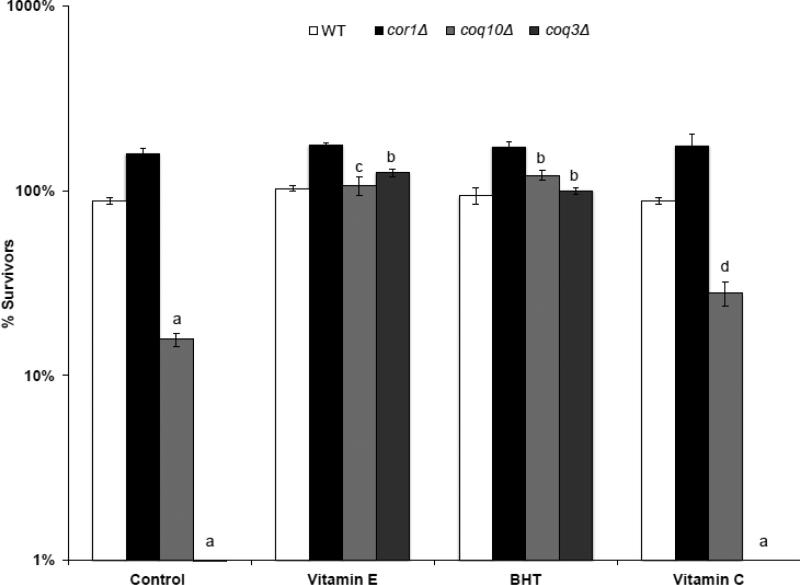Figure 7.
Treatment of yeast coq10 null mutants with BHT, vitamin E, or vitamin C rescues the αLnn toxicity. The fatty acid sensitivity assay and statistical analyses were as described for Fig. 4, except yeast were treated with designated antioxidant compounds prior to the addition of αLnn. Three 100 μL aliquots were removed at 4 h, and following dilution, spread onto YPD plates. Cell viability was assessed by colony count. Yeast strains include wild type (white), cor1 (black), coq10 (light gray), or coq3 (dark gray). In the absence of antioxidants, the number of surviving αLnn treated coq3 and coq10 null mutant cells is significantly lower as compared to wild type and cor1 null mutants (a, p < 3.1 E−05). In the presence of lipid soluble antioxidants, the number of surviving αLnn treated coq3 and coq10 null mutant cells is significantly higher as compared to no antioxidant treatment (b, p < 2 E−05, c, p < 2.2 E−04). The water-soluble antioxidant, vitamin C failed to rescue coq3 mutant cells hypersensitivity to αLnn treatment (a, p < 3.1 E−05). In contrast, vitamin C afforded partial protection of the coq10 mutant cells hypersensitivity to αLnn treatment (d, p < 8 E−03).

